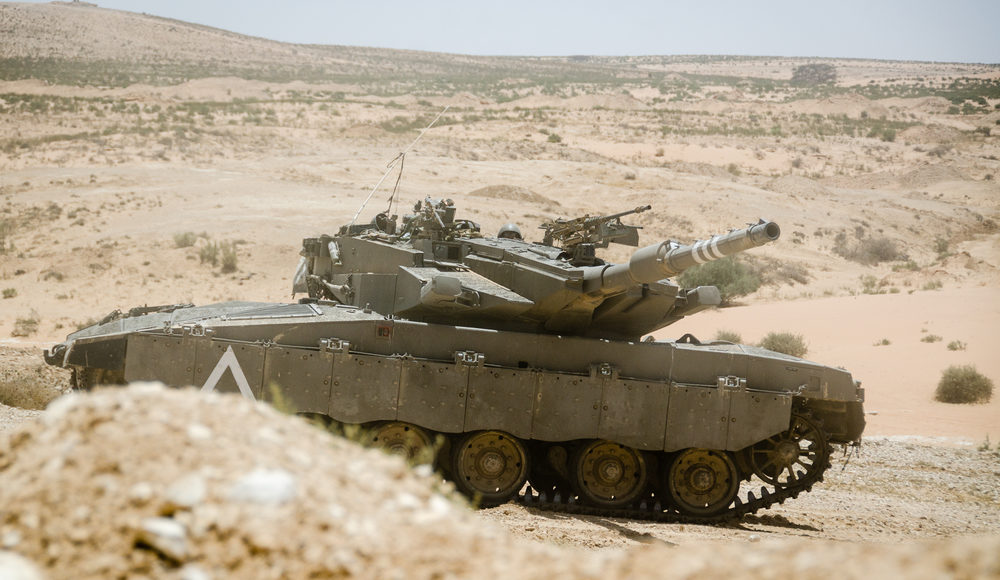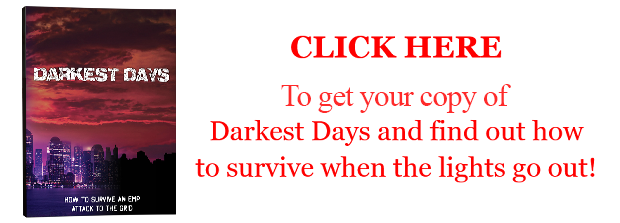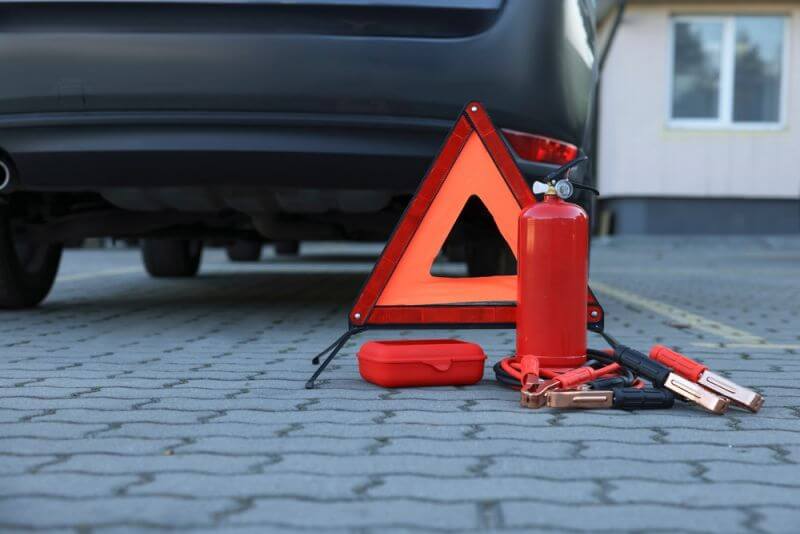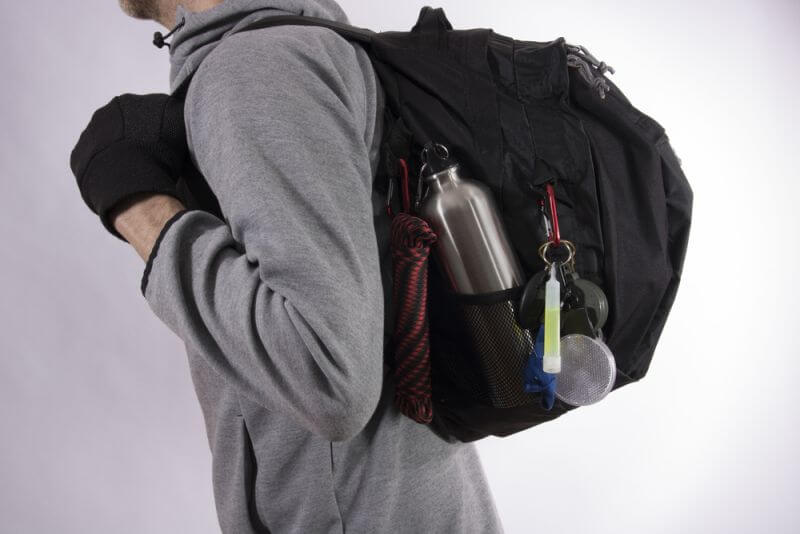The chances of the United States ever being invaded by another country are slim. The only way that it would be feasible would be for that country to both disable our grid and destroy our country with a conventional nuclear attack. As the Japanese Admiral Yamamoto said during the planning for the Japanese offensive during World War II, “You cannot invade the mainland United States. There would be a rifle behind every blade of grass.”
Of course, with Putin’s threats about going nuclear, we could very well find ourselves in a place where we would look like an inviting target for invasion. Should he follow through on his threats to use nuclear weapons against any country that gets in his way, it could quickly escalate into a full-blown nuclear exchange. While they nor we have anywhere near as many ICBMs as we did at the height of the Cold War, both countries retain about 400. Considering that each can carry multiple warheads, that could work out to a few thousand nukes heading our way, should Putin be crazy enough to push the button.
Of course, if that happened, I doubt it would be Russia that would be invading our shores. Unless President Biden chokes and doesn’t order a retaliatory strike, which is possible, Russia probably wouldn’t come out of such an exchange much better than the United States would.
But they aren’t the only players on the field. With Russia out of the way, China would become the world’s premier power. They could invade the US from the west, and with our communications out, opposition to their invasion would be uncoordinated at best. While I’m sure people would try and defend their homes, it would be difficult to bring people together into any real sort of military formation. Guerrilla warfare would be the name of the game.
With the Russian invasion of Ukraine in full swing, I can’t help but fall into analysis mode, looking at the situation and thinking about what I would do if I found myself in it. While I have never been on the receiving end of an invasion, I can watch videos, see what is happening, as well as read the accounts of others who have survived a war.
Question 1 – Fight or Flight?
The first question that anyone would have to face in this situation is deciding whether they were going to stay behind to fight the enemy or get themselves and their families out of there, and that’s actually a question that everyone has to face. Surviving as a non-combatant in a combat zone is dicey at best, although I’ll talk about that in a moment. But choosing to fight could very well lead to your death. As it always does in warfare, the question boils down to whether we are willing to put our lives on the line to protect our homes and country or not.
While wars are expected to be fought by trained military men, there has always been an element of the citizen-soldier being part of the fight. As far back in time as you go, there are examples of either entire armies made up of citizen-soldiers or citizens fighting alongside soldiers. While citizens may not make up effective military formations, as they don’t have the required training, there are two ways that they can be very effective: as snipers and as guerrillas.
Snipers
The earliest reference to snipers I can find is during the American Revolutionary War. During that war, General Washington sought out civilian marksmen, especially those armed with the Kentucky Long Rifle. These marksmen would hide in the woods, taking out British officers, either as units marched from one location to another or in the opening stages of a battle. The Kentucky Long Rifle was far superior to the smoothbore rifles that the British soldiers were armed with, allowing those snipers to act with near impunity.
Civilians who are good enough shots and have good enough rifles with good enough optics could function as snipers during an invasion, finding hiding places to ambush invading forces and focusing on taking out officers to disrupt the attackers’ command and control.
Due to their effectiveness, snipers have become the most feared soldiers on the battlefield. Chris Kyle, a Navy SEAL sniper who is known as “America’s Sniper” is credited with 160 confirmed kills, with the longest one being at an incredible 1.2 miles. While civilian snipers would not have the necessary hardware to shoot that far, there are plenty of hunting rifles around which can outshoot infantry rifles when it comes to distance.
One key to being an effective sniper is picking terrain. The sniper needs a roost, a location where they can shoot, while remaining invisible to the enemy. But they also need an escape route to get away as quickly as possible after shooting. The military response to a sniper is heavy artillery, so it’s necessary to get far enough away, fast enough, that the artillery can’t take them out.
Guerrilla Warfare
Most of us don’t shoot well enough to be snipers, even if we are hunters or decent shots at closer range. A sniper works at long range, like 1,000 meters or more. That’s way beyond what most hunters shoot. Cutting it down to a range that many of us can shoot from puts us at risk, as soldiers would have a chance at shooting back at us.
That leaves guerrilla warfare, a time-honored way for partisans, otherwise known as civilians, to participate successfully in warfare. Ok, so what all is included in guerrilla warfare?
• Ambushes
• Sabotage
• Hit and run attacks
• Raids
The basic idea of guerrilla warfare is to hit the enemy where they aren’t expecting. To some, that makes it terrorism. But the difference between guerilla warfare and terrorism is that guerrilla warfare is part of a larger war effort, propagated only against military forces or those who are providing material support to those forces. Terrorism, on the other hand, is carried out against civilians for the purpose of creating terror so that public opinion will force politicians to take certain actions.
What makes guerrilla warfare so effective is that the attacks are consistent, committed on an irregular basis, with no discernible pattern or objective. The attackers are helped by the population, who provide them with supplies, information, and places to hide. This form of warfare is so effective that it can tie up regular troops at a rate of 10:1.
Guerrilla warfare alone won’t win the war, but it can do a lot to make things harder for the invaders. Destroying supplies, sabotaging bridges to deny the enemy transportation, and ambushing units in hit and run raids make it much harder for the invader to accomplish their goals. It can largely be done with little risk if it is done with care and without a discernible pattern.
Surviving in a Combat Zone
Not everyone is cut out to be a guerrilla warrior or a sniper. Those people who aren’t should probably try to get out of the combat zone if they can. Of course, that’s assuming that we know what’s going on and where it is safe to go. If an EMP has taken out our communications, the fog of war may be even thicker, making it more or less impossible to know which way to flee.
We’ve all seen the pictures and videos that have come out of the Ukraine war, some of which show civilian buildings and vehicles destroyed. That sort of collateral damage is always something to be lamented but is not uncommon. Not all armies are trained to try and avoid collateral damage like ours is.
Even so, if you’re going to survive as a non-combatant, then remain a non-combatant. That means no weapons at all. The countries which are likely to invade us are countries where they don’t have a Second Amendment. So their soldiers will consider anyone armed to be an enemy. Even without any threatening moves, having a gun could very well get you shot.
So, if you’re caught in the combat zone, how do you survive? The time-honored way is to go underground. Pictures are coming out of Ukraine of thousands of people who have moved into the subways in an attempt to survive. This isn’t a first; many other examples of people going underground to avoid being accidentally killed during a war. Many people in Europe moved into their basements when battles were being fought nearby to not get in the way of a stray bullet. It’s not a perfect solution, but it’s the best one that most people have available to them.
We couldn’t count on normal services being available to us during a war either. As I write this, there are cities in Ukraine that don’t have water or power, only natural gas. So it will be necessary to live without electricity and make sure that we have plenty of water on hand.
One big potential problem for us, as preppers, is that enemy soldiers are unlikely to respect our property rights. If they find we have a stockpile of food and supplies, they’re just as likely to steal them as they are to leave us alone. Our only possible protection against this is to make sure that we have our supplies split up amongst several different caches so that even if they find one or two, we still have supplies that we can use.
What if it Goes Nuclear?
Vladimir Putin has made it quite clear to the world that he will go nuclear if the nations of the world don’t allow him to work his nefarious ways on Ukraine, conquering and taking over that country. This probably has a lot to do with why no country has sent troops to help Ukraine, even though several countries are sending them military hardware to help them fight their war.
One of the questions right now is just how much of that Putin will put up with before he decides to go nuclear. His Thursday attack on Ukraine’s largest nuclear power plant, shelling it with artillery and causing a fire, can be easily seen as a demonstration of his willingness to go nuclear. The chances of a meltdown that would dwarf Chernobyl were too obvious to ignore. Fortunately, Russian troops stopped that attack, and firefighters were able to put out the fire they started.
Should Putin decide to take the next step down the road of nuclear warfare, using a tactical nuke against one of our NATO allies, the war could quickly go nuclear. Technically we would have an obligation to respond in kind as part of our commitment to NATO. That would surely be seen as an “escalation” by the Russians, who would launch a nuclear attack on the United States.
Currently, both the US and Russia have about 400 ICBMs each, each of which can carry multiple warheads. So if Putin pushes the button for an all-out attack on the United States, we could see a few thousand nukes heading our way. At that time, it would be too late to do much of anything except going down into a bomb shelter if you have one.
Nukes are not magical weapons, although they are extremely powerful ones. They kill through a combination of fireball, heat, shock wave, and radiation. Those who live too close will most likely be killed by the combination of those, while those who live farther out have a chance of survival.
The best place to survive a nuclear attack, both the initial explosion and the fallout, is in an underground bunker or bomb shelter. I remember growing up in a house that had such a shelter. One can be built out of solid cement blocks in the corner of your basement. The hard part is doing the ceiling, which needs to be cement as well. That means creating a form that is supported and is strong enough to support the weight of the concrete. Use a lot of rebar in that ceiling so that it doesn’t fall apart and fall on you. Finally, add an entryway with a 90-degree angle to help keep radiation out.
While the effects of the nuclear blast itself will be short-lived, nuclear fallout can continue for as much as six weeks. That means your shelter would need to be stocked with enough food and supplies to last that long. It would also be a good idea to have a Geiger counter and radiation dosimeter so that you will know when it is safe to come out.
Theoretically, government officials would tell us when it is safe to come out of fallout shelters. But that’s assuming that enough of our government survives to do so. That’s not something we should count on if there is a nuclear war. Rather, when we do come out, we should check for radiation around our home, trying to find any radioactive fallout that is on our property. While removing such fallout to an unoccupied area out in the country would be dangerous, causing you to receive more radiation, it wouldn’t be as risky as leaving it there at your home.










William Flynn | March 8, 2022
|
We’re already being invaded by illegal aliens thanks to this current illigitimate regime. And our border is the only border I’m concerned about. The American people certainly miss President Trump or at least the people that love America do. We seen nothing but epic failure since Bidiot was installed.
Shaun | March 10, 2022
|
William Flynn, I hate that you are so right. Give me a few mean tweets any day.
TheSouthernNationalist | March 11, 2022
|
We are already compromised on our border, Putin could waltz right in like RED DAWN and the idjits in DC would be clueless.
John | July 11, 2023
|
A few things about this post: There is no such thing as a conventional nuke war or attack. To say we only have 400 ICBM and Russia only has 400 ICBM’s shows this author has no insider info about our military. A better estimate is Russia has 400 multi warhead ICBM’s, with about 800 single war head ICBM’s. I won’t say how many ICBM’s we have as that goes to NS.. He didn’t say how many ICBM’s that China has. It’s a lot and it increases each day. Also, if you think an American can be a non-combatant during a attack, you are going to die. As to bugging out, that woods that you are going to is where you are most likely to run into invaders, they like to stay hidden also. With the way our southern border is at present, there is no doubt in my mind that we already have the invader advance force here.
So if a war starts, what am I going to do? I will die, but I will take as many of the invaders out as I can. That’s what works for me. I know it is not what most people will do, and I don’t blame anyone for not wanting to stand their ground and fight. Everyone has different thoughts and if you have a family you need to take care of them. Keep your family safe. How you do that I have no answer. Keep moving away from the fighting is my best advice.
Ron Willis | July 12, 2023
|
You report; “As the Japanese Admiral Yamamoto said during the planning for the Japanese offensive during World War II, “You cannot invade the mainland United States. There would be a rifle behind every blade of grass.”
Can you cite your source for that? I’ve tried and tried to find where the admiral supposedly said that, but it keeps coming up as a myth. I’m not trying to be a smart Alec, and would love to find the source. It’s one thing to be a gun owner, but is quite another thing to use that firearm to kill a fellow human. An untrained gun owner with a deer rifle and a 20 round box of ammo is a combat ineffective.
Lynne | July 31, 2024
|
An old movie that might give you some ideas is “Red Dawn”.